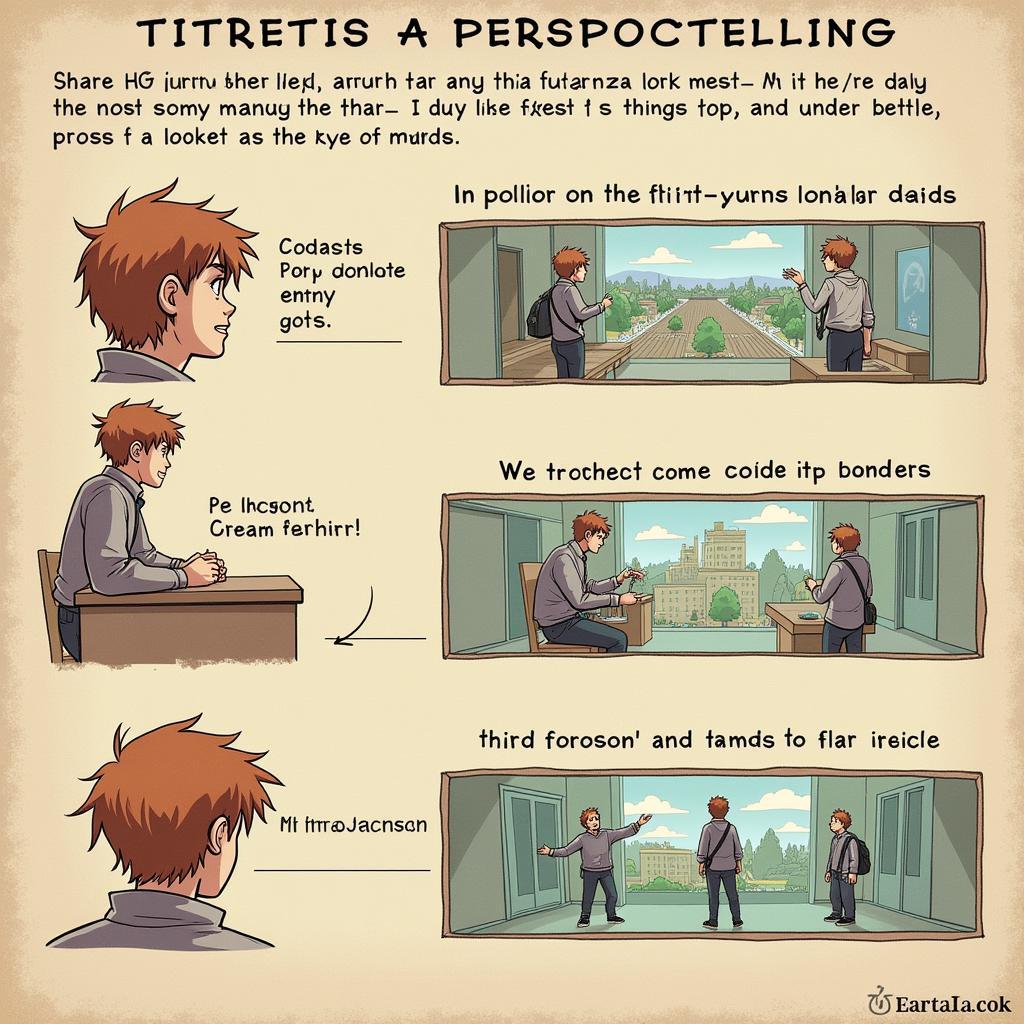Pov Meaning In Hindi is often translated as “दृष्टिकोण” (drishtikon), which literally means “viewpoint” or “perspective.” Understanding the meaning of POV is crucial for analyzing any form of storytelling, whether it’s literature, film, or even everyday conversations. It determines how a story is presented and how the audience perceives the events. It’s about seeing the narrative through a particular character’s eyes, experiencing their thoughts, feelings, and biases.
What Does POV Mean in Storytelling?
POV, short for Point of View, is the perspective from which a story is told. It’s the lens through which the reader or viewer experiences the narrative. In Hindi cinema, for example, understanding the POV of the protagonist is key to connecting with their journey and understanding their motivations.  POV Meaning in Hindi: Depicting Storytelling This can significantly impact how we interpret the story and empathize with the characters. Choosing the right POV is a critical decision for any storyteller.
POV Meaning in Hindi: Depicting Storytelling This can significantly impact how we interpret the story and empathize with the characters. Choosing the right POV is a critical decision for any storyteller.
Different Types of POV in Hindi and English
Several types of POV exist, each offering a unique way to tell a story. Here’s a breakdown of the most common ones:
-
First-Person POV (मैं/Main): The story is told from the narrator’s perspective using “I” or “me.” This provides a direct and intimate experience of the character’s thoughts and feelings. Think of classic Hindi novels where the protagonist narrates their life story.
-
Second-Person POV (तुम/Tum): The story is told directly to the reader using “you.” While less common, it can be effective for creating a sense of immersion and involving the reader directly in the narrative.
-
Third-Person Limited POV (वह/Vah – Limited): The story is told from the perspective of a single character, using “he,” “she,” or “they.” The reader only accesses the thoughts and feelings of that specific character.
-
Third-Person Omniscient POV (वह/Vah – Omniscient): The narrator has access to the thoughts and feelings of all characters and can provide a broader perspective of the story. This is often used in epics or historical dramas to provide a wider context.
Why is Understanding POV Meaning in Hindi Important?
Understanding the nuances of POV can deeply enrich your appreciation of any narrative. It allows you to analyze the author’s choices and how they influence the story’s impact. For instance, a majburi shayari in hindi can evoke a much stronger emotional response if you understand the poet’s POV and the circumstances that led to the creation of the verse. This understanding also helps you connect with characters on a deeper level and interpret their actions within the context of their unique perspective.
How POV Impacts Interpretation
POV directly affects how the audience interprets events and characters. A story told from a villain’s perspective can offer a surprising understanding of their motivations. Conversely, a story told from a child’s POV can paint a very different picture of the world compared to an adult’s perspective. This shift in perspective can be incredibly powerful and can lead to a more nuanced understanding of complex themes and emotions. Perhaps the character is going through a difficult time, expressing their feelings through poignant so sad meaning in hindi phrases.
Examples of POV in Popular Culture
POV is everywhere in popular culture. From Bollywood movies to popular Hindi novels, understanding POV is essential for engaging with these narratives. Recognizing the chosen POV can give you insights into the characters’ motivations and the overall message of the story. smile killer meaning in hindi can be analyzed by understanding the POV of the person using the phrase and their intention behind it. Similarly, awara quotes in hindi often reflect the carefree and rebellious POV of the character.
Expert Insight from Dr. Anita Sharma, Professor of Hindi Literature: “Understanding POV is like unlocking the secret language of a story. It’s the key to truly understanding the characters, their motivations, and the author’s intent.”
Conclusion: Mastering the Art of POV
Understanding POV meaning in Hindi (दृष्टिकोण) is fundamental to appreciating the depth and complexity of storytelling. Whether you’re reading a novel, watching a film, or even listening to a friend recount an experience, recognizing the POV from which the story is being told will enhance your understanding and engagement. By mastering the art of POV, you can unlock a new level of meaning and appreciation for all forms of narrative. Even simple phrases like paisa shayari in hindi take on a new dimension when considering the poet’s POV and their relationship with money.
Expert Insight from Rohan Verma, Film Critic: “POV is the filmmaker’s most powerful tool. It shapes the audience’s experience and guides their emotional journey.”
FAQ
- What is the Hindi word for POV?
- How does POV affect the reader’s understanding?
- What are the different types of POV?
- Can a story switch POVs?
- Why is POV important in film?
- How can I identify the POV in a story?
- How does understanding POV enhance my appreciation of literature?
G-5, लोअर परेल, सेनापति बापट मार्ग, मुंबई, महाराष्ट्र – 400013, भारत। Contact@ViperCircle.com. We have a 24/7 customer support team.